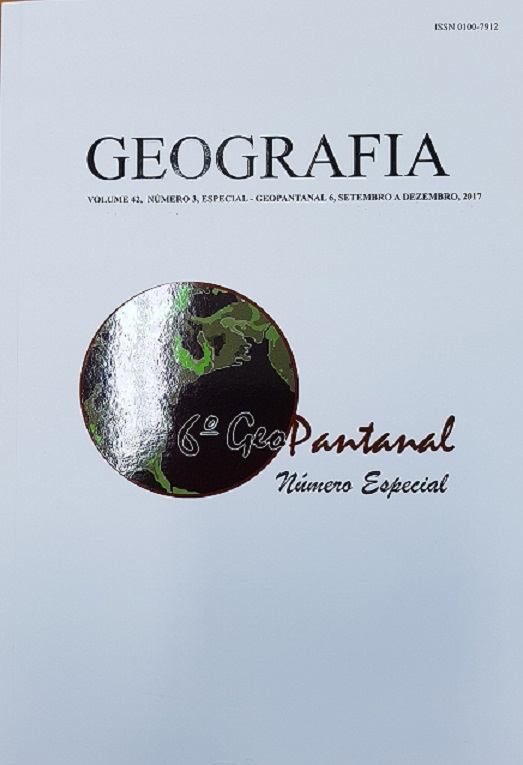MAPPING AND VEGETATION COVER INDEX FROM CÁCERES CITY, MATO GROSSO STATE (MT), BRAZIL
DOI:
https://doi.org/10.5016/geografia.v42i3.13093Resumo
Analyzing the urban space related to its own growth allows to identify the identification of the dynamics of the natural elements and the way the intensified anthropic action shapes and at the same time degrades the landscape, which in the present study is the Pantanal biome. The objective of this study is to use high resolution images and vegetation cover indexes to analyze the urban expansion of Cáceres/MT, and to generate financial support for municipal planning and management. For the execution of this research, remote sensing images and a Geographic Information System (GIS) were used, as well as demographic census data. The urban expansion contributed to the removal of 19.62% of the vegetation and to the increase of 15.28% of anthropic use. The Caceres Vegetation Cover Index is high, with vegetation percentages above 30% occurring in 74.42% of the neighborhoods. From the date of the study on the Index of Vegetation Cover for Inhabitant (ICVH) decreased by 37.20%, remained at 32.55% and increased by 30.25%. It was concluded that an increase in the use of urban space contributed to the reduction of vegetation, as well as the decrease of the population associated to the vegetation of the neighborhoods influenced on the decrease of the ICVHDownloads
Publicado
Edição
Seção
Licença
Os autores mantém os direitos autorais e concedem à GEOGRAFIA o direito de primeira publicação, com os artigos simultaneamente licenciados sob a Licença Creative Commons BY 4.0, que permite o compartilhar e adaptar os artigos para qualquer fim, desde que sejam dados os créditos apropriados e as disposições dos direitos de imagem, de privacidade ou direitos morais. Outras atribuições legais podem ser acessadas em: https://creativecommons.org/licenses/by/4.0/legalcode.en.
Geografia, Rio Claro, SP, Brasil - eISSN 1983-8700 está licenciada sob a Licença Creative Commons BY 4.0





